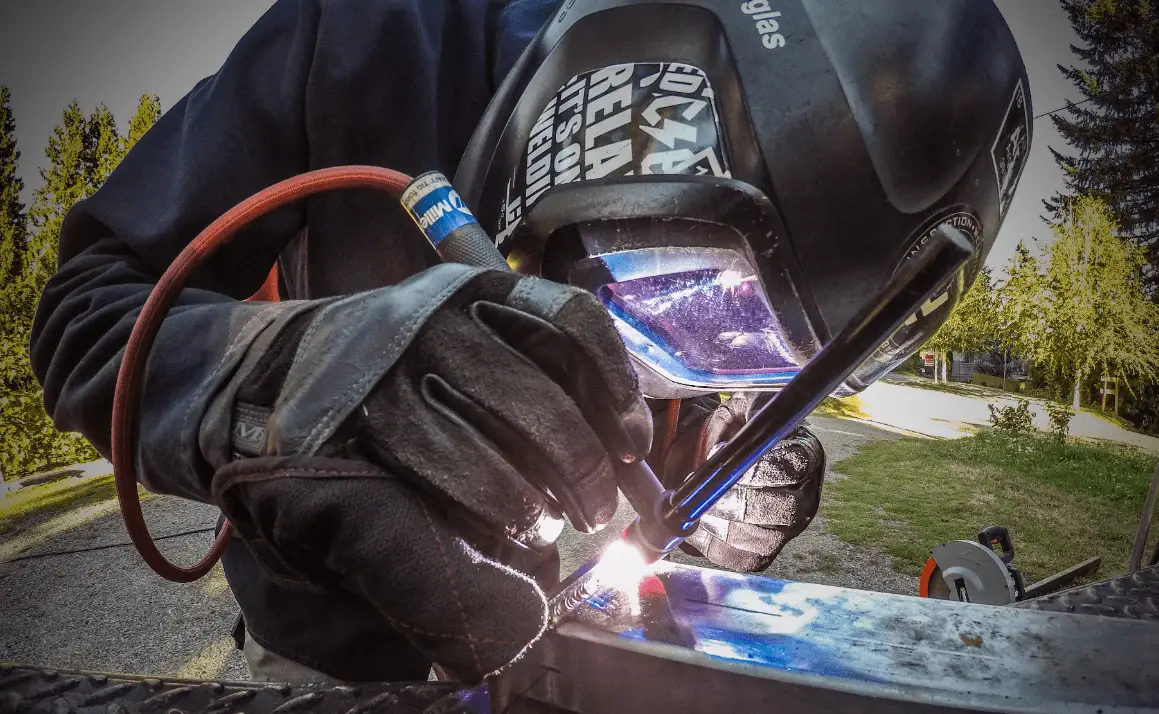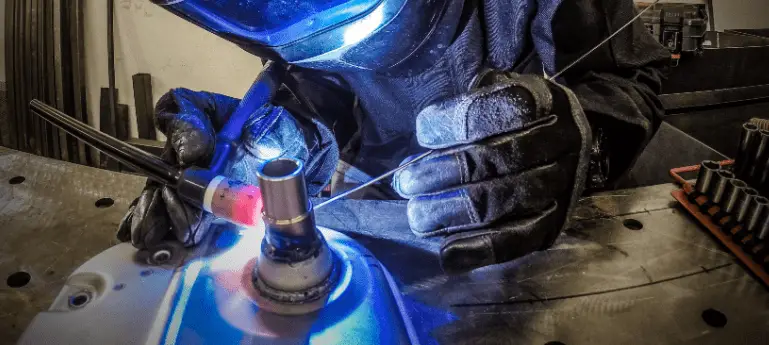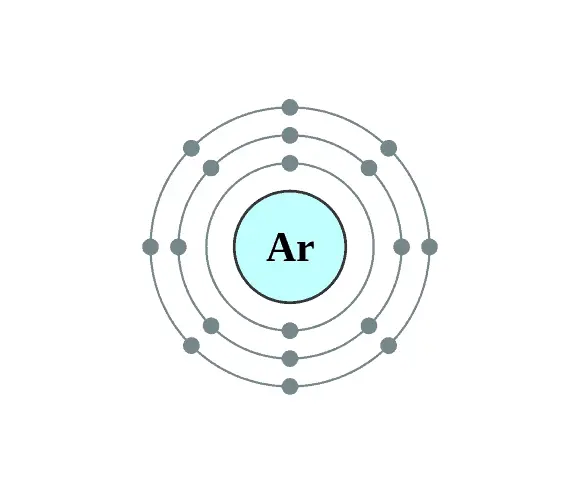If you’re planning on trying your hand at TIG welding aluminum, the first question you might be asking—and perhaps the most important one—is what is the proper gas for TIG welding aluminum? But before you get to gun-ho about choosing the right gasses and settings for your project, you should note something very important: TIG welding, and any kind of welding with Aluminum, can be very tricky!
Indeed, TIG welding is a fairly complicated process in itself, and aluminum happens to be one of the more difficult metals to weld on. So, before we go any further, we should mention that TIG welding aluminum is probably not the best place to start if you are a novice welder. But, if you have some experience and you already have a reliable TIG welder, then this guide is definitely for you.
What Shielding Gas Should I Use for TIG Welding Aluminum?

The answer to which TIG welding gas you should use for welding Aluminum is simple: pure Argon.
In fact, you should use pure Argon for welding Aluminum whether you’re using the TIG welding process or even the MIG welding method. Why is Argon the gas of choice for gas welding aluminum?
It’s simple: it adds much more cleaning capabilities to the arc than Helium can. But, there’s another big reason. That is, pure Argon is often considerably more affordable than Helium.
Now, this advice is for you if you are planning on welding Aluminum base metals that are ½ inch thick or less. However, if you are welding Aluminum components or trying aluminum welding boat, or other projects involving materials that are greater than ½ inch in thickness, you may want to add some Helium to the mix.
Depending on the thickness of your base material, you can add from 25 to 75 percent Helium. Doing so will ensure that your arc is hotter in order to improve the penetration of your weld. So, if you’re using thicker pieces of Aluminum, you’ll definitely want to go with a mixture that includes some level of Helium, depending on the thickness of your base metal.
But remember, Helium can be a bit more expensive than pure Argon. So, you’ll want to take this economic factor into consideration before you start getting into your Aluminum welding project. Just be sure you are aware of the costs involved with either option and do some research about exactly how much Helium you need to produce quality welds on thicker metal components.
Can Aluminum Be Welded with DC TIG?
You might be surprised to find out that the ability to weld Aluminum using a DC TIG is one of the more hotly debated topics in the online welding community. Certainly, using AC power with your Budget TIG welder on Aluminum is going to give you a considerably cleaner weld. But should you consider using DC power to TIG weld Aluminum?

The short answer: maybe. While you certainly can TIG weld Aluminum with DC power, the better question should probably be: should you use DC power to TIG weld aluminum?
That is, while in most instances, AC TIG welding is going to be your best bet when welding or learning how to TIG weld aluminum, there are certain rare circumstances in which experimenting with DC TIG welding might be worth experimenting with when it comes to welding Aluminum.
For instance, the most likely reason you might consider using DC power on Aluminum is that your base metal is thicker—that is, probably thicker than ½ of an inch. If you were to weld Aluminum of a greater thickness than ½ of an inch with AC power, you run the risk of warping the base material. This is because you would need enough power to get strong weld penetration. Indeed, thicker pieces of Aluminum are susceptible to warping, distortion, and even burning through the metal when welded with AC power.
Choose the Right Shielding Gas
Choosing the proper shielding gas is crucial when it comes to TIG welding Aluminum. There are two basic options you can choose from. You can use either pure Argon or an Argon-Helium blend. The shielding gas you choose will depend on two things: one, how thick is the base material that you plan to work with? Two, are you planning on using AC or DC power? The answers to those two questions will guide you toward making the correct decision for the proper gas to use for your particular purposes. We’ll consider the implications of those options throughout this article.

In fact, these issues with DC power when TIG welding Aluminum is where choosing the proper shielding gas comes into play. If you’re planning on welding thicker pieces of Aluminum (that is, pieces that are more than ½ an inch in thickness), you’ll definitely want to use an Argon-Helium gas mixture. This will allow your weld to penetrate deeper into the weld joint.
We should also note that, while Argon is the most commonly used shielding gas for TIG welding Aluminum, and an Argon-Helium mixture would be the next most common, there is also a third option: pure Helium. However, we won’t be discussing the use of pure Helium as a shielding gas for Aluminum welding, as this is primarily used in very advanced and specialized welding applications. It can be used for gas Tungsten arc machines with negative direct current electrodes. In particular, it’s used most often as a shielding gas for Gas Metal Arc Welding, which is not our concern in this article.
Argon – The Most Common and Versatile Gas for TIG Welding Aluminum
Pure Argon is, as we’ve already mentioned, the most common gas used for TIG welding aluminum. It’s very effective for most TIG welding processes involving Aluminum. However, as we’ve mentioned, there are situations when you will need to incorporate a mixture that includes Helium for best results.

One thing to note, however, is that you should never use a shielding gas mixture that incorporates Carbon Dioxide or Oxygen. As you might expect, doing so can result in the oxidation of the Aluminum, a result you do not want for your welding project!
Also, you might want to note that the addition of Helium to your welding gas mixture can potentially speed up your welding process.
So, in a sense, the generally higher cost of Helium gas might end up being offset by the time that you can save by using it instead of using pure Argon. Of course, speed shouldn’t be your main concern when deciding which gas to use. The main factors for your choice of shielding gas for Aluminum TIG welding should always be the thickness of the material you are working with and whether you will be using AC or DC power.
Issues to Consider with TIG Welding Aluminum on DC
As you’ll be introducing a great deal of heat into your joint when running on DC power, it’s a great method when you need deep penetration of your base material. But it is crucial that you do this with great care, as it can be very easy for things to get much too hot much too quickly. This can result in very uneven and quite sloppy joints. While these welds will still probably hold just fine, they don’t look great and are less likely to pass an inspection.

It’s also important to consider the TIG welding machine that you are working with. Newer TIG welders often deliver quite different finished products than older machines.
Also, we’ve found that we get much better results using TIG welders under $1000 on DC when using thicker electrodes.
In order to produce quality welds when TIG welding Aluminum, it’s a good idea to do a little bit of pre-heating before you get going. Be careful, though. If you pre-heat too much, you can potentially run into some major problems when you begin the actual welding process.
But the biggest thing to consider when deciding whether or not to use DC power when TIG welding Aluminum is this: experience and skill. If you are not (yet!) a skilled welder—and specifically if you aren’t fully comfortable with TIG welding—you should probably avoid jumping in to welding aluminum - don't even think about using a torch.
TIG welding alone is difficult. Welding Aluminum is also very tricky. That means that TIG welding Aluminum on DC power is incredibly difficult. The bottom line: this process is not for novice welders. Wait until you get some more experience under your belt before you attempt this more advanced procedure and leave this complicated process to the experts for now.
Ultimately, you’ll have to make your own decision as to whether or not you’re ready to take this step into TIG welding Aluminum. It’s certainly one of the trickier welding processes you can try, but if you have the equipment, if you have mastered welding positions and are up for a bit of a challenge, we hope this guide has helped you take the first steps.
FAQs
1. Do you TIG weld aluminum on AC or DC?
DC is used to TIG weld mild steel and stainless steel, while AC is used to weld aluminum. TIG welding uses three different types of welding current depending on the type of connection.
2. Do you push or pull when TIG welding aluminum?
When TIG welding stainless steel, aluminum, or steel, use argon gas. While both the push and pull methods are effective for MIG welding, the push method is always preferred for TIG welding.
3. What color tungsten do I use for aluminum?
Tungsten Nitride (Color Code: Green)
Additionally, pure tungsten offers excellent arc stability for AC sine wave welding, particularly on aluminum and magnesium.
4. What is the easiest way to weld aluminum?
The Most Effective Aluminum Welding Technique
Utilize a solvent such as acetone or a mild alkaline solution such as a strong soap to remove any oil, grease, or water vapor from the aluminum's surface.
With a stainless steel wire brush, remove surface oxides (made specifically for aluminum).
5. What Rod do I use for aluminum TIG welding?
043 aluminum tig rod - the most versatile aluminum tig rod for 3003, 6061, and a355 aluminum castings. and do yourself a favor and acquire some 4047 rods for castings in which porosity rears its head. In addition, 4047 has a silicon content of 12%. This improves the flow and reduces cracking.

